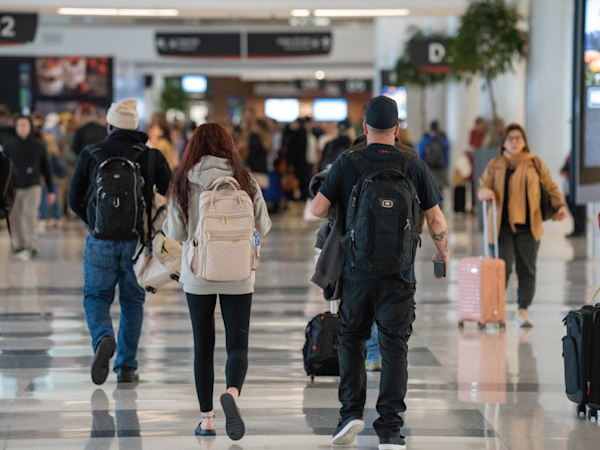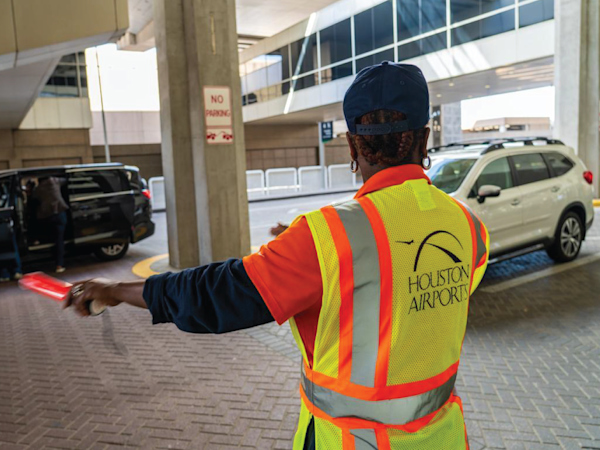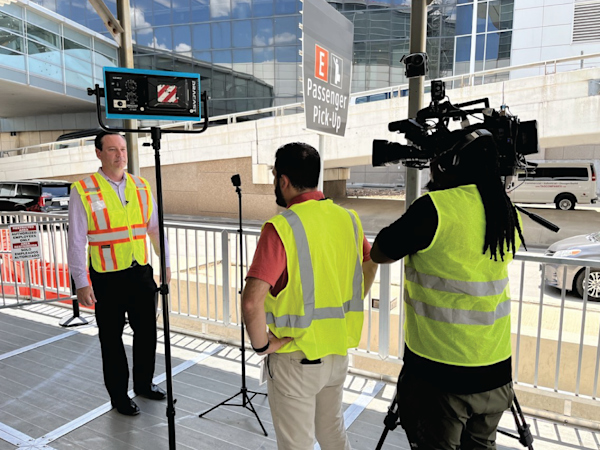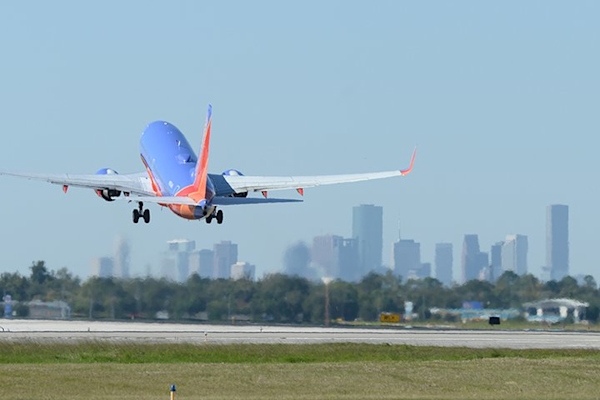Top Story

Top Story
The woman who runs Houston’s skies
At 3 a.m., while most of Houston sleeps, Kelly Woodward sometimes does too, until her phone buzzes with a weather alert or an incident on the airfield. Cargo flights push through the night, storms shift across the Gulf, and the system she runs never really pauses. As chief operating officer of Houston Airports—and the first woman to hold the job—it’s her responsibility to keep the fourth-largest U.S. city connected to the world.
 Kelly Woodward tours a construction site at Bush Airport in 2024
Kelly Woodward tours a construction site at Bush Airport in 2024
In March 2024, Woodward made history when she was appointed chief operating officer of Houston Airports. The role puts her in charge of George Bush Intercontinental (IAH), William P. Hobby (HOU), Ellington Airport (EFD) and the Houston Spaceport — together a city within a city, with 1,200 employees, 63 million passengers a year and more than 180 nonstop destinations. “It’s exciting. It’s fun. A desk job would be boring,” she said with a grin. “I’m responsible for 1,200 employees and just trying to do right by them. That’s my biggest focus.”
 Woodward talks with employees during an appreciation lunch in 2024.
Woodward talks with employees during an appreciation lunch in 2024.
Her dream, though, started far from Houston. Growing up in New Jersey, Woodward was the kid who stopped to watch the rumble of planes overhead. “I was always fascinated by astronauts and space travel,” she said. That curiosity propelled her to Embry-Riddle Aeronautical University in Daytona Beach, Florida, where she earned a bachelor’s and master’s degree in aeronautical science, a commercial pilot’s license and a flight instructor certificate.
By her early 20s, she was teaching others to fly, certain the cockpit was her launchpad. Then came 9/11. “I was a flight instructor in Florida when the terrorist attacks happened, and the training schools shut down,” she said. “Airlines weren’t hiring. Training programs froze. I thought I might eventually return to flying, but opportunities opened up in Houston instead.”
She moved to Texas on the recommendation of friends. Two decades later, she has built a career defined not by smooth takeoffs, but by turbulence, persistence and a steady refusal to accept “no” as the final answer.
Woodward joined Houston Airports in 2002 as an operations coordinator. She climbed steadily, serving as an airside operations supervisor, division manager of custodial services, interim general manager of Bush Airport and assistant director of operational readiness. She later stepped into the private sector as managing director with AvAirPros, overseeing terminal systems integration and baggage handling for the IAH Terminal B Transformation.
“I’ve done enough jobs out here to understand what my employees need and what they go through to really relate to them,” she said.
 Woodward welcomes new employees to Houston Airports in 2025.
Woodward welcomes new employees to Houston Airports in 2025.
She describes her management as rooted in empathy, visibility and accountability. “Whether it be the airside or the operational side, my job is to be out there checking everything out,” she said. “I’m out there ensuring everyone has the tools to succeed in their jobs.”
Jim Szczesniak, director of aviation for Houston Airports, said she was the clear choice. “Kelly’s wealth of experience and leadership skills make her the perfect COO,” he said. “We have full confidence in her ability to drive our strategic initiatives forward.”
 Woodward joins Aviation Director Jim Szczesniak along a new Arrivals Curb at IAH in 2024.
Woodward joins Aviation Director Jim Szczesniak along a new Arrivals Curb at IAH in 2024.
Her appointment is more than a personal milestone; it’s a message. Aviation remains stubbornly male at the top. Woodward’s presence signals a shift. “The challenge is making sure everyone enjoys coming to work, feels valued and feels they have a focus and know they can come to me,” she said.
 Woodward talks to employees during an appreciation lunch in 2024.
Woodward talks to employees during an appreciation lunch in 2024.
That philosophy was evident when she hosted a group of young women at Bush Airport through the Camp Counselor Career Catalyst program. Many were from underserved communities. Before sitting down with Woodward, they toured everything from runway inspections to emergency management. “We were thrilled to host these young women and to show them the range of careers available within the Houston Airport System,” she said. “It was inspiring to see their enthusiasm and to hear the thoughtful questions they asked.” Some left with a new sense of possibility. “By providing young women with opportunities to explore different career paths, this visit was more than just a field trip,” she said. “It was an opportunity for them to envision a future in aviation.”
Girls in Aviation Day, which falls on Saturday, Sept. 20, will spotlight leaders like Woodward. She’s scheduled to speak to girls between 8 and 17 at Chennault Aviation Academy in Houston. For all her professional responsibility, Woodward doesn’t hesitate when asked about her most important title. “My number one job is mom,” she said. “Your job is your job, but at the end of the day, my kids need me.”
Her husband, a cargo pilot, helps her manage a busy household with three children, two dogs and two cats. She credits her mother, who was a newspaper executive, with showing her how to balance ambition and family. “My mom taught me to do right by people,” she said.
 Woodward celebrates a new route served by Volaris in 2025.
Woodward celebrates a new route served by Volaris in 2025.
The grit of her Jersey roots has never left her. “My motto is: don’t let anybody tell you that you can’t do something. You miss 100 percent of the chances you don’t take,” she said. But Houston has shaped her, too. “Houston’s diversity, great food and culture have grown on me. Texas is a little different. I love it here.”
 Woodward launches a monthly talk show for employees in 2024, Catch up with Kelly.
Woodward launches a monthly talk show for employees in 2024, Catch up with Kelly.
Woodward has taken on every role, faced every setback and turned each “no” into momentum. Today, she leads with the same grit that carried her from a grounded flight instructor to the first woman COO of Houston Airports. The titles may have changed, but her compass has not: do right by people and prove that the skies really are wide enough for anyone determined to rise.


























